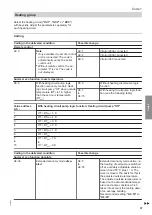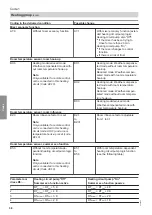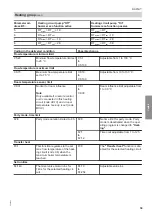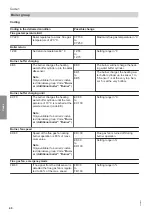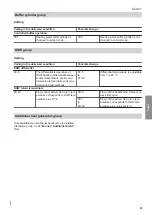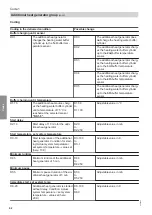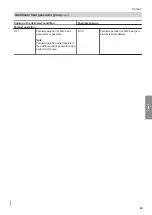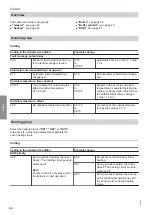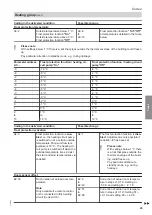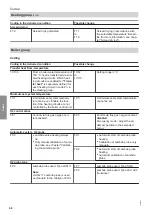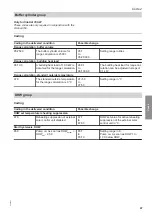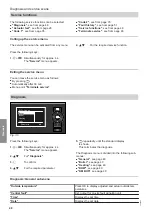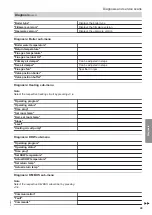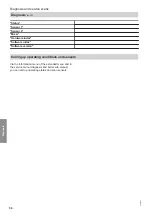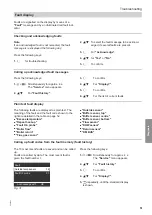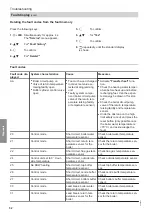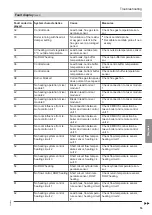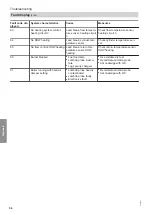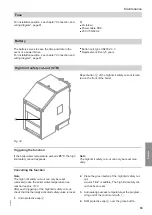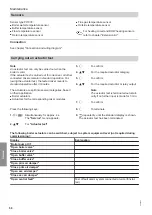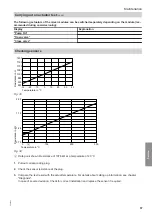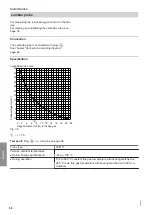
51
Faults are signalled on the display by means of a
"Fault"
message and by an illuminated red fault indi-
cator.
Checking and acknowledging faults
Note
If an acknowledged fault is not remedied, the fault
message is re-displayed the following day:
Press the following keys:
1.
d
for troubleshooting.
2.
|
/
~
To select the fault message to be acknowl-
edged, if several faults are present.
3.
d
For
"Acknowledge"
.
4.
|
/
~
for
"Yes"
or
"No"
.
5.
d
To confirm.
Calling up acknowledged fault messages
Press the following keys:
1.
+
Simultaneously for approx. 4 s.
The
"Service"
menu appears.
2.
|
/
~
For
"Fault history"
.
3.
d
To confirm.
4.
|
/
~
For
"Display?"
.
5.
d
To confirm.
6.
|
/
~
For the list of current faults.
Plain text fault display
The following faults are displayed as plain text. The
meaning of the fault and the fault code shown to the
right are detailed in the table on page 52.
■
"Excess temperature"
■
"Repeat heat-up"
■
"Fault O2
–
probe"
■
"Boiler flow"
■
"Boiler return"
■
"Flue gas sensor"
■
"Outside sensor"
■
"Buffer sensor, top"
■
"Buffer sensor, centre"
■
"Buffer sensor, bottom"
■
"Flow sensor"
■
"DHW sensor"
■
"Return sensor"
■
"KM BUS"
Calling up fault codes from the fault memory (fault history)
The 10 most recent faults are saved and can be called
up.
Faults are sorted by date. The most recent fault is
given the fault number 1.
Fault
Acknowledge with
Fault O2 probe
Outside temp sensor
91
34
OK
Fig. 31
Press the following keys:
1.
+
Simultaneously for approx. 4 s.
The
"Service"
menu appears.
2.
|
/
~
For
"Fault history"
.
3.
d
To confirm.
4.
|
/
~
For
"Display?"
.
5.
ä
repeatedly, until the standard display
is shown.
Troubleshooting
Fault display
5684984
Diagnosis

